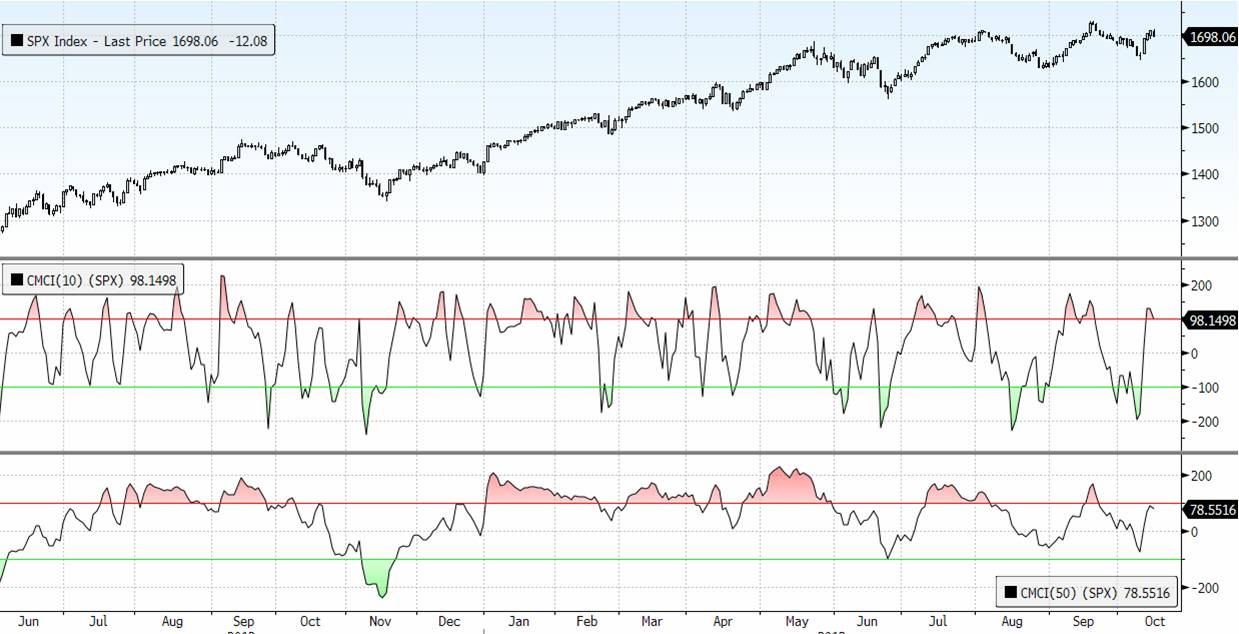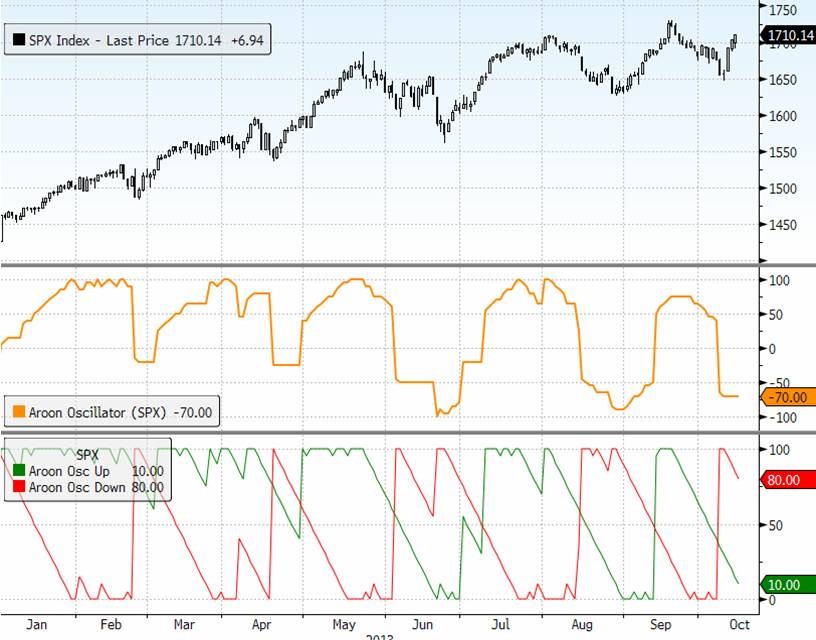RateofChange (ROC) entry Trading Strategy Ideas
Post on: 23 Апрель, 2015 No Comment

The ROC ( Rate of Change) is an indicator that measures the percent change of the price comparing two different time periods .
This indicator is usually used to calculate the change between the current price, related to a given currency or at a given index, and the price referred to N periods ago.
The ROC is one of the simplest indicators to explain and can be an effective tool, but it should always be used in conjunction with other technical information such as price patterns, that can confirm the signal coming from the ROC.
Obviously, its main task is to define whether the momentum is in a positive phase or a negative one.
Just to clarify the meaning of the world momentum. it is the acceleration of a certain asset on the price. It is widely used by many traders in order to evaluate the exact point in which to open a position as accurately as possible and the exact point at which to close previously opened positions. If the momentum shows a positive acceleration, then the trader will have to open new buy operations, otherwise if the momentum indicates a negative acceleration, that the trader will have to open sell positions.
If the value of the ROC is greater than zero, then it is considered as a growing momentum indicator, and therefore the trader will be able to open buy operations. Instead, if the ROC is lower than zero, then the momentum will probably be negative and the trader will have to sell.
As for all other momentum indicators, the sensitivity of the trader will guide him to choose the most reliable time range to make choices in the market.
The function of the ROC, however, is not only limited to the definition of the momentum state of an asset, but it also helps capturing any bullish or bearish excess sign or trend reversal signals through the divergence with the price of the asset.
Here is a classic 20-day ROC applied to the S&P500:
Unlike the Commodity Channel Index, the ROC is a normalized indicator so it has a lower and upper limit, respectively -100 and +100. As we can see from the chart, the overcoming of the zero line is a confirmation of the current trend (bullish if the zero line is crossed from the bottom to the top, and bearish vice versa), but for what concerns the thresholds of overbought / oversold, each asset has its own characteristic and therefore it is not possible to fix the numbers beyond which we can get an overbought (such as 70/30 of the RSI) a priori.
As we are going to see in the following examples, the past history of the ROC can help us in setting extreme thresholds and adequate time periods to get effective signals, however, as for other indicators of this kind, it is still recommended not to immediately open a position on the signal but it is better to wait for the confirmation from the price.
DEFINITION OF THE TREND
As for other oscillators, the ROC gets a very good indicator from the zero line, as it is able to define the underlying trend of the asset. Ideally, when the ROC crosses the zero line from the top to the bottom, the trend becomes bearish, vice versa, when it crosses the zero line from the bottom to the top, then the trend is bullish.
However, in these cases, we must distinguish the trend, whether if it is a short, medium or long term one, and often associate these definitions to the periods of ROC that refer to the exact number of sessions. The 21-day ROC indicates the number of sessions that usually distinguish a single working month, the 63-day ROC represents 3 months and the 250day one shows one year of trading sessions.
Depending on the time horizon of each trader, the ROC can indicate the directionality of a trend, but certainly the 21, 63 and 250-day ROC aligned above or below the zero line provide an absolute confirmation of what direction the market will choose and therefore what type of operation we should start.
The chart shown here below shows a concrete example of the above mentioned statements.
Between 2011 and the end of 2012 EurUsd experienced a rather sharp bear market. Obviously, the signals of the affirmation of this trend came from the 21-day ROC before, and then from the 63 one and finally from that of 250. This latter one, apparently the slower one to provide signals, highlighted the moment when the three ROC were all placing under the zero line with the pink vertical bar of September. There was no timing claim in this case, but the chorality of the three indicators confirmed that the bearish trend captured the market and in fact the market kept on falling until July.
Same situation, but upside down towards the bullish side, occurred when the three ROC reversed their trend overcoming the zero line upward. The first turn was represented by the most volatile 21-day ROC, followed in March by the 63-day one, although this signal turned out to be a false one because the 250-day ROC was still well below the zero. In fact EurUsd continued its fall for a few months.

After a few months, in December 2012, the 250-day ROC rose above the zero line confirming what was already emerging from the 21 and 63-day ROC. The bull market of EurUsd had just restarted together with a contemporary formalization of a bullish head and shoulder figure.
OVERBOUGHT AND OVERSOLD
The ROC can be used in alternative to other normalized oscillator, such as the overbought / oversold indicators. Certain fixed parameters cannot be set in advance (as often happens to the RSI), but on the basis of the underlying financial asset and its historicity, it is possible to indicate whether the market is overheated or overly pessimistic, with some reliability.
For example, the price of gold in the last two years. As we can see from the graph, a 21-day ROC over the +10% announces an overbought phase that has to prepare (but not give the certainty) a trading signal, about a top of the price of the yellow metal. The vertical bars indicate where in fact the price of gold was positioned when the 21-day ROC was closing above +10%. It’s evident how the primary top had to be forecasted just after a few sessions.
Here is instead the same graph but, according to the oversold point of view. The vertical bars indicate where the price of gold was when the 2-day ROC was closing below -10%. Even in this case, a primary bottom had to be foreseen, but only on the basis of this strategy, it was not possible to go long on gold.
In order to help us finding the correct entry timing, we can quote the divergences between ROC and prices. Here is a zoom on the graph of gold in the period between August 2011 and January 2012 .
In August 2011, a first peak of gold corresponded to a peak at 18% of the 21-day ROC; this was followed by a correction of prices and Roc, but in the subsequent rise of gold, prices rose above the previous top while the ROC could not exceed 15%. This was the expected divergence to liquidate long positions.
Nowadays, the methodologies used by traders are the most disparate. They range from the short signal activated when the ROC drops below the threshold of +10% or the conservative method that triggers the short signal as soon as the ROC falls below the zero line. Other traders can use the moving averages on the ROC or prices as a benchmark, while others (such as in this case) some graphic patterns of inversion on the ROC or on the price of gold. In this case, the signal anticipated an obvious bear market for gold. Same analysis in late September, but this time the ROC, while falling below -10%, did not create any bullish divergence between ROC and prices. Even in these cases, triggering a bullish signal after one of the above mentioned events would have still led to a good long trade. The divergences were instead registered at the end of 2011 when gold scored two decreasing lows against a ROC that was scoring two rising tops instead. The graphic break of a triangle on the ROC signaled the opportunity to return long on gold, and it was then confirmed by the return of the same indicator above the zero line.
CONCLUSIONS
The ROC is therefore an oscillator that allows us to measure the rising speed of prices on several time scans. Depending on the type of trading that we want to try, the number of periods taken into consideration will obviously be more sensitive to the price volatility. As with all indicators of this kind, the achievement of the overbought / oversold level is not enough to adopt short / long trading strategies, but instead the divergences will alert the trader about the chance of a trend reversal. After defining the extreme levels and divergences, the main task of the trader is to establish the entry rule. Moving averages, price patterns or ROC, cross of the zero line…each method may have its validity and reliability when properly tested according to its past behavior.














